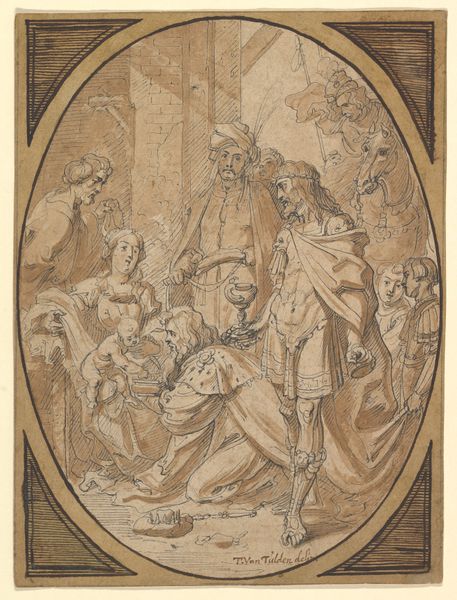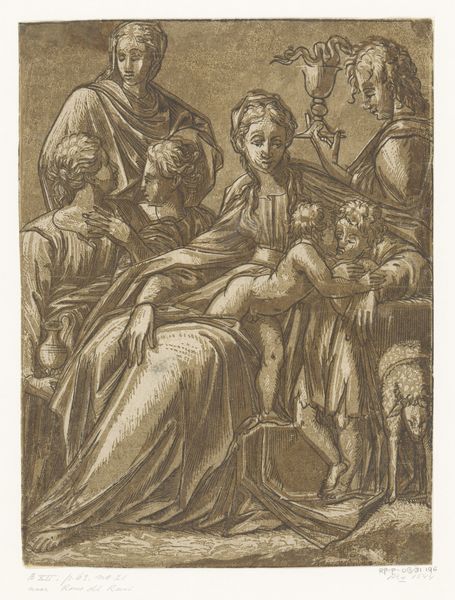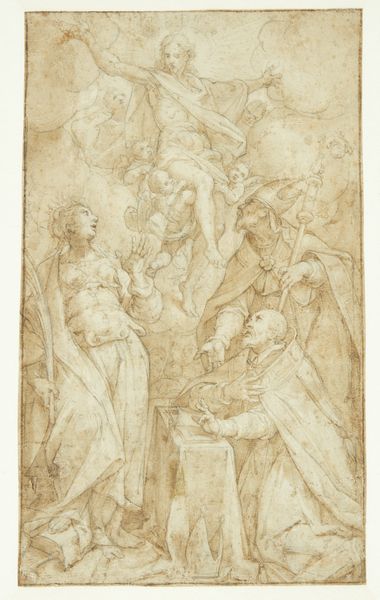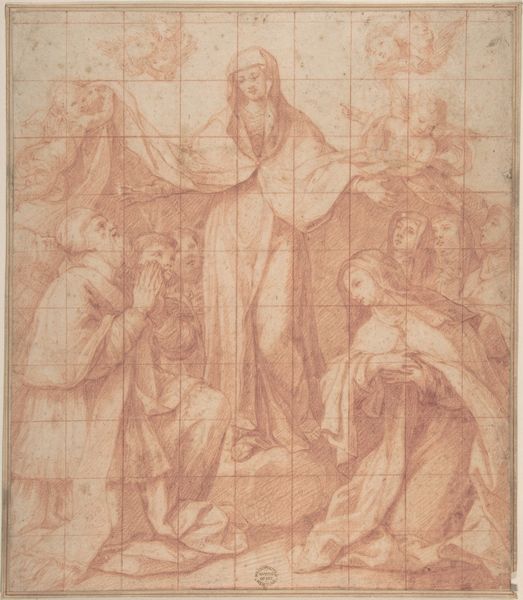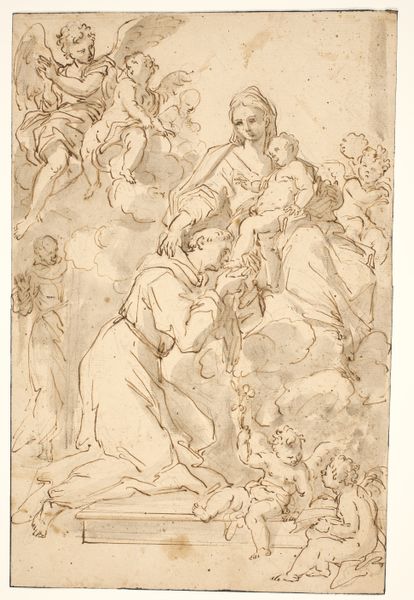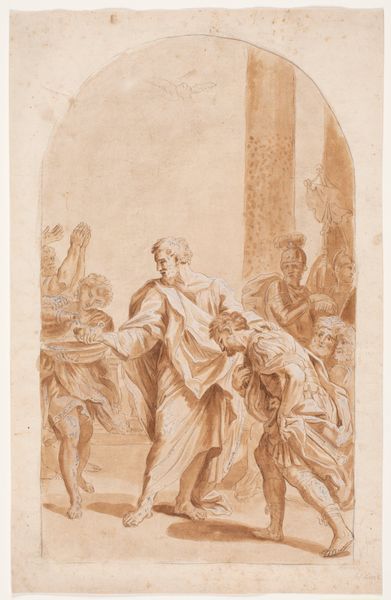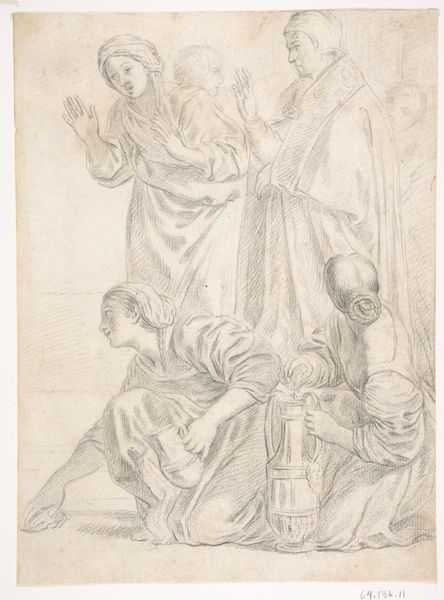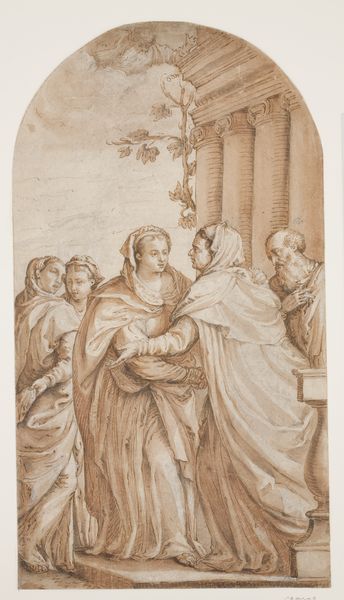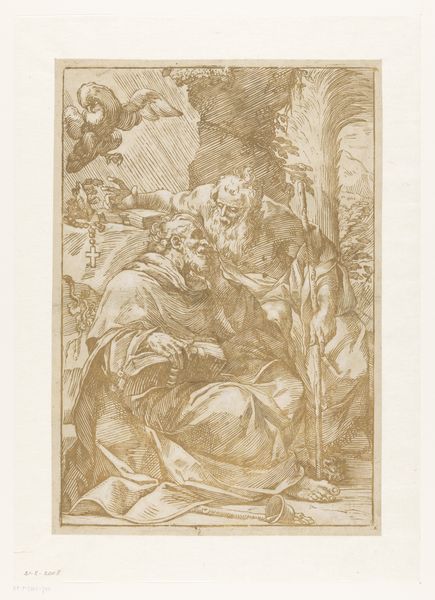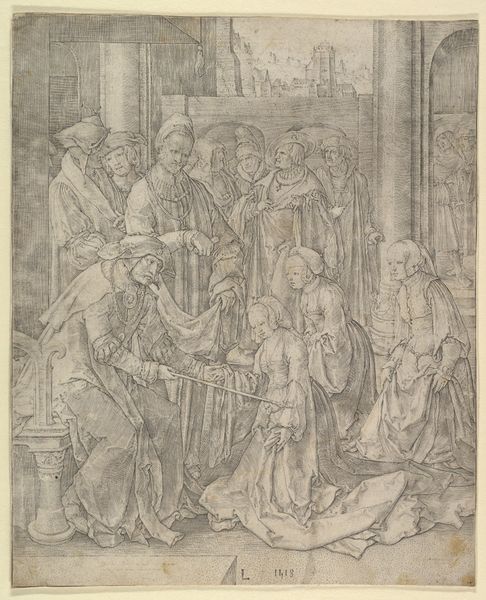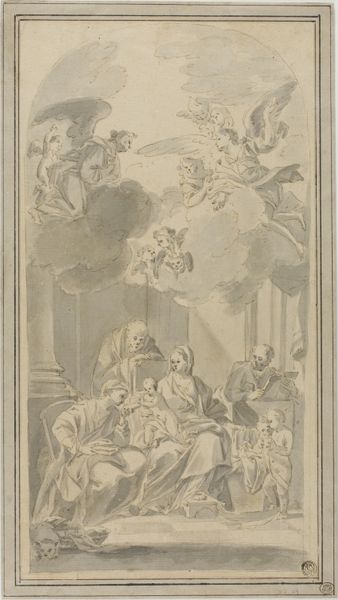
drawing, ink, pencil, chalk
#
drawing
#
high-renaissance
#
figuration
#
ink
#
pencil
#
chalk
Copyright: Public Domain
Curator: Looking at this work by Raphael, dating from around 1511 to 1512, housed at the Städel Museum, one is immediately struck by the level of detail in this chalk, ink, and pencil drawing, given it’s not even a finished piece. Editor: Yes, there's a preparatory quality, an exploratory essence that I find compelling. It evokes a sense of the artist’s thinking, process of figuring out the weight of each figure, their gazes, and what’s at stake with this legal exchange. I wonder, what scene is unfolding here? Curator: It depicts “The Handing Over of the Pandects.” These were a compendium of Roman civil law compiled under the orders of Emperor Justinian. Its rediscovery in the 11th century greatly influenced the development of European law. Editor: The choice to highlight this moment – the presentation of legal codes– speaks volumes about Renaissance humanism's reverence for classical thought, and moreover, the very tangible way laws shaped lived experience. Who do you think the figures here represent? Curator: Well, Raphael likely intended to represent the rediscovery of the Pandects, portraying the moment when this ancient knowledge was handed over, possibly to legal scholars, that would influence jurisprudence for centuries. Editor: It is fascinating to think how that action, the handing over of the books themselves, had the ability to codify norms around societal gender roles, ownership, and even global economies for the next few centuries. Curator: Indeed. But stepping back to the craftsmanship, observe Raphael’s subtle shading to bring forth the details in the draped clothing. The variety of his strokes emphasizes how the textures create depth. The materiality serves the political importance of this moment in the history of Law. Editor: Exactly, we must ask ourselves to look at the conditions that bring forth works like this: wealth for acquiring the expensive materials, labor put in it by the artisans preparing chalk and pencils to give the perfect color, etcetera. All which enables Raphael to bring his ideas into material form, as you were mentioning before. Curator: Precisely. The very consumption of his material makes visible what social power looked like back in that time. Editor: Well, that definitely brings the weight and material depth of “The Handing Over of the Pandects” to life! Curator: I agree. There are layers of context we need to acknowledge beyond its aesthetic merit, giving it a wider significance for today's public.
Comments
stadelmuseum about 2 years ago
⋮
In the Vatican's Stanza della Segnatura, opposite to the fresco of the Parnassus, Justice is depicted. To the left of the window we see the historical presentation of the codified Roman civil law (the Pandects) to Emperor Justinian. The brush-and-ink drawing which establishes how the light is to be distributed is very lively in quality, even in its sketchier passages. The pen-and-ink drawing on the back, related to a composition of the Resurrection of Christ, is a workshop copy.
Join the conversation
Join millions of artists and users on Artera today and experience the ultimate creative platform.

